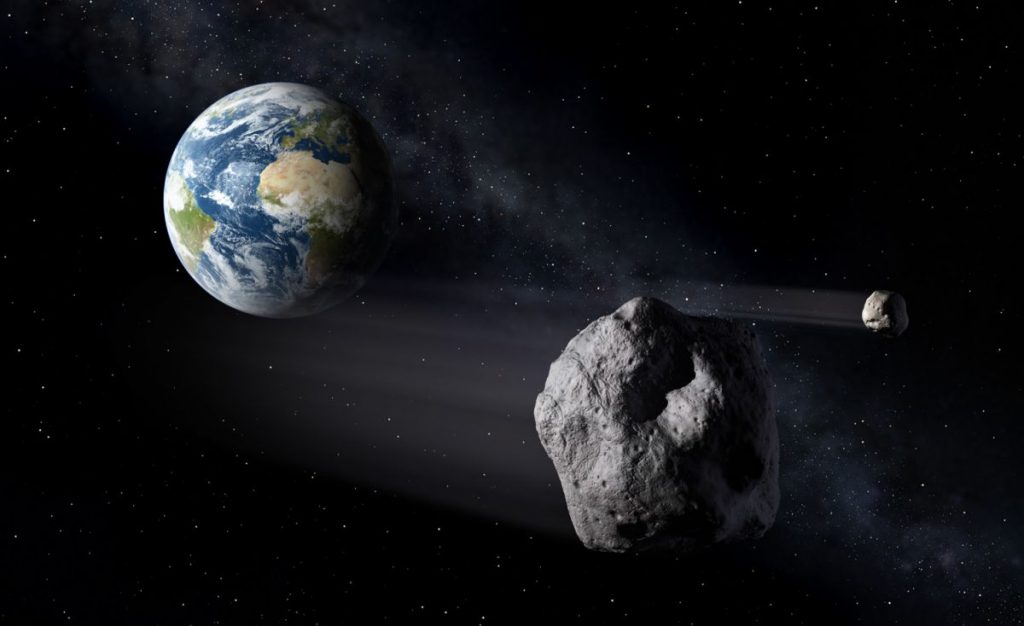
Astronomers plan to fish an interstellar meteorite out of the ocean using a massive magnet (Image Credit: Space.com)
Astronomers are planning a fishing trip to land an extraterrestrial interloper on Earth: a small meteorite from another star system that crashed into the Pacific Ocean with energy equivalent to about 121 tons (110 metric tons) of TNT.
The team, from Harvard University, hopes to find fragments of this interstellar rock — known as CNEOS 2014-01-08 — which slammed into Earth (opens in new tab) on Jan. 8, 2014.
“Finding such a fragment would represent the first contact humanity has ever had with material larger than dust from beyond the solar system (opens in new tab),” Amir Siraj, an astrophysicist at Harvard University and the first author of a new paper (opens in new tab) published on the non-peer reviewed preprint service ArXiv on CNEOS 2014-01-08, told Live Science in an email.
Related: What are the largest impact craters on Earth? (opens in new tab)

Siraj identified the object’s interstellar origin in a 2019 study (opens in new tab) with 99.999% confidence, but it wasn’t until May 2022 that it was confirmed to Siraj by the U.S. Space Command. There are no known witnesses to the object striking Earth.
“It struck the atmosphere about a hundred miles [160 kilometers] off the coast of Papua New Guinea in the middle of the night, with about 1% the energy of the Hiroshima bomb (opens in new tab),” Siraj said.
Measuring just 1.5 feet (0.5 meters) wide, CNEOS 2014-01-08 now appears to have been the first interstellar object ever discovered in our solar system.
Previously, an oblong object called ‘Oumuamua (opens in new tab) held that title. Discovered in 2017 during the Pan-STARRS sky survey, the space rock zipped through our solar system at nearly 57,000 mph (92,000 km/h), and later, Harvard astrophysicist Avi Loeb, a colleague of Siraj, claimed it might be an alien machine (opens in new tab). ‘Oumuamua’s discovery was followed in 2019 by Comet 2I/Borisov, the first interstellar comet, which was spotted by amateur astronomer Gennadiy Borisov in Crimea.
CNEOS 2014-01-08 is thought to be from another star system because it was traveling at 37.2 miles per second (60 kilometers per second) relative to the sun. That’s too fast for it to be bound by the sun’s gravity (opens in new tab).
“At the Earth’s distance from the sun, any object traveling faster than about 42 kilometers per second [26 miles per second] is on an unbounded, hyperbolic escape trajectory relative to the sun (opens in new tab),” Siraj said. “This means that CNEOS 2014-01-08 was clearly exceeding the local speed limit for bound objects [and] it didn’t cross paths with any other planets along the way, so it must have originated from outside of the solar system.”
Cut to Siraj and Loeb’s Galileo Project, which aims to mount a $1.6 million expedition to lower a magnet similar in dimensions to a king-size bed at 1.3 degrees south, 147.6 degrees east, the U.S. Department of Defense’s location of the meteorite’s resting spot. That’s about 186 miles (300 km) north of Manus Island in the Bismarck Sea in the southwest Pacific Ocean.
Related: The first known interstellar meteor may have hit Earth in 2014
— Interstellar visitor ‘Oumuamua wasn’t a nitrogen iceberg, Harvard astrophysicists say (opens in new tab)
— A spacecraft could visit weird interloper ‘Oumuamua. Here’s how (opens in new tab).
— Interstellar visitor ‘Oumuamua came from an ‘alien Pluto,’ new study suggests (opens in new tab)
CNEOS 2014-01-08 greatly exceeded the material strength of a typical iron meteorite, which should make it even easier to recover, according to Siraj. Material strength refers to how easily something can resist being deformed or damaged by a load. “Most meteorites contain enough iron that they will stick to the type of magnet we plan on using for the ocean expedition,” he said. “Given its extremely high material strength, it is very likely that the fragments of CNEOS 2014-01-08 are ferromagnetic.”
Leaving from Papua New Guinea, the Galileo Project’s ship would use a magnetic sled on a longline winch, which will be towed along the seabed at 1 mile (1.7 km) for 10 days. It’s hoped the magnet can recover tiny fragments of the meteorite, measuring as small as 0.004 inches (0.1 mm) across.
However, it’s unclear when the astronomers will be able to mount their expedition. The Galileo Project already has $500,000 committed, with a further $1.1 million required to make it a reality. That’s good value compared to a space mission, according to Siraj.
“The alternative way to study an interstellar object at close range is by launching a space mission to a future object passing through the Earth’s neighborhood,” said Siraj, who with Loeb is also working out the details of such a mission should another object like ‘Oumuamua appear in the solar system. “But that would be 1,000 times more expensive at about $1 billion.”
Originally published on Live Science. Follow us on Twitter @Spacedotcom (opens in new tab) or on Facebook (opens in new tab).








